Liner memories in New York City
New York City has always been the most important liner port in the United States of America, although the importance of ports as Philadelphia, Boston, San Fransisco and Los Angeles is sometimes overlooked drasticly. On this page I will show some signs of the history of the liner services that are still visible in the city that never sleeps, the big apple. The shores of Manhattan did change drasticly from the 1960's onwards. In the heyday of the oceanliner, almost every part of the shores of Manhattan was covered with finger piers. And not only Manhattan was surrounded by these piers, also the shoresides of Brooklyn and the northern part of Staten Island were busy portsides. Next to that, Hoboken in New Jersey, just across the Hudson river, was a well known docking area for ships from Holland America Line, Norddeutscher Lloyd and several other companies. In the New York area, the liners from Europe docked, as well as freighters and ferryboats. Also, ships to Latin America, the Caribbean, South America and Africa sailed from these piers.
Nowadays, piers 88, 90 and 92 are the piers where cruiseship passengers are landed. These piers used to be the docking sites for the French Line (pier 88) and Cunard Line (pier 90 and 92) and they were used for ships like Queen Mary, Queen Elizabeth, Ile de France and Normandie. Normandie burned in 1939 at pier 88, the spot where Carnival Glory is berthed in this picture. Holland America's Eurodam is docked at the former Cunard pier.
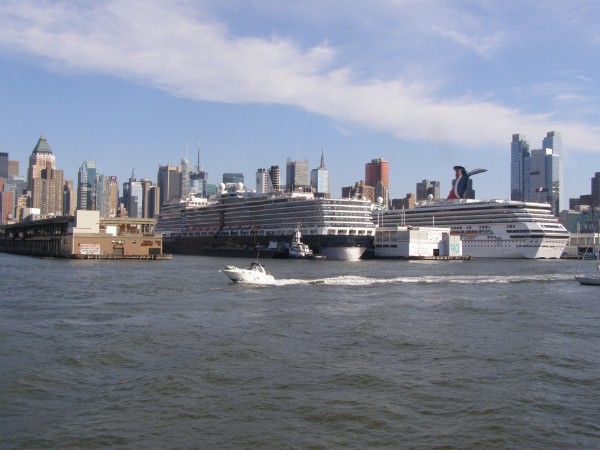
The port of New York moved away from the city from the late 1950's onwards, in the direction of Cape Liberty in New Jersey. Here, there still was room and infrastructure for new containerports and storages, when conventional ships slowly started to dissappear. The liners still docked at Manhattan, untill the late 1960's, when airlines took over the passenger trades. For some time, the old piers layed idle, untill most of the piers at the southern tip of the island were demolished for landgrowth, desperately needed in the overcrowded city. The piers in the middle part of the city were also mostly demolished or rebuilt for other purposes, like the Chelsea Piers that were rebuilt into sportingvenues and recreational area's. Just three piers are now still used as the New York passenger terminal. In this changing city, there still are some silent memories of the time when passengers from Europe arrived by thousands a day seeking for a new life in the new world. When I visited New York in september 2010, I tried to find some of the evidence for this memory.
Below is the entrance to Castle Clinton, once a stronghold in the American struggle for independence, but also used as the building where immigrants were checked before entering the United States untill Ellis Island was opened in 1892. A more detailed look at Ellis Island can be found here.
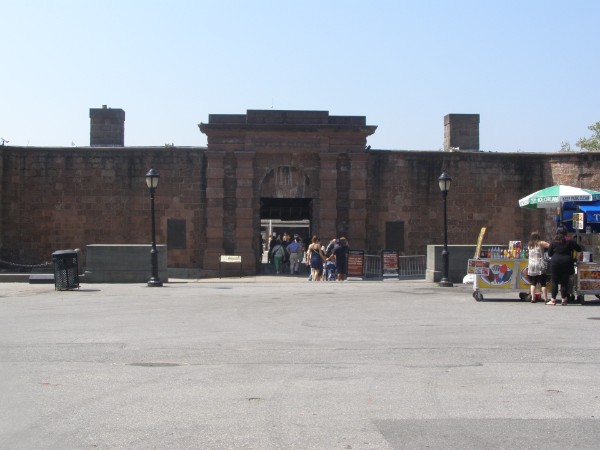
Below is the oldest passengerterminal of New York City, near Castle Clinton in Battery Park. The very first oceanliners docked here, at pier A and pier B, in the time before the other piers were built around the island of Manhattan.

Most people who arrived by boat from Europe did not stay in New York City. Most likely, they took the train to other parts in the United States to seek new lives, and this trainstation on the New Jersey side of the Hudson was the most likely place they went to. From here, trains were running across the whole of the country to transport millions of people across the northern American continent. Nowadays, it is no longer in use as a trainstation, but the building remains and it is a very important place in immigrant history.
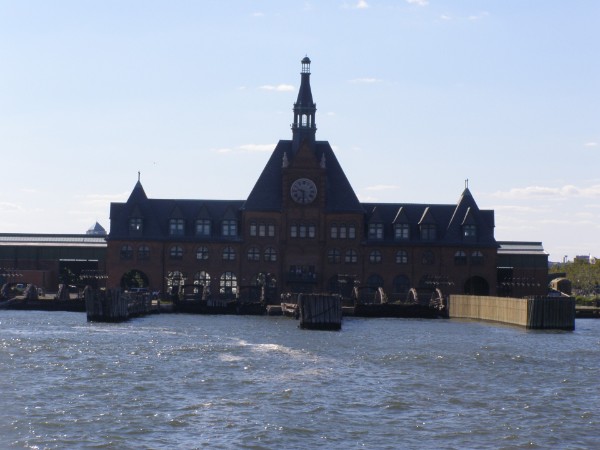
The sculpture The Immigrants at Battery Park, made by Luis Sanguino. The sculpture celebrates the diversity of the city of New York, and the struggle of immigrants entering the city. In the sculpture, a priest, a freed African slave, an Eastern European jew and a worker are portrayed on the pier as they enter their new life.
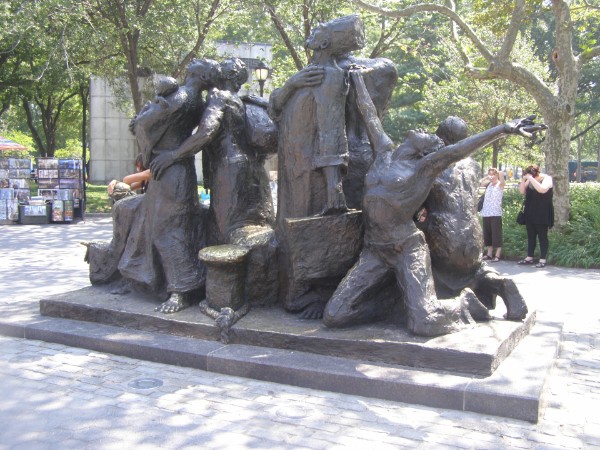
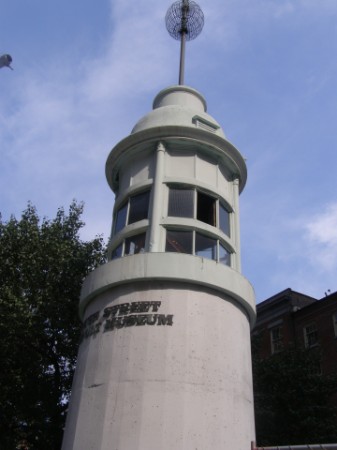
The Titanic Memorial Lighthouse next to the Southstreet Seaport, and now part of the Southstreet Seaport museum. Originally, the lighthouse was built in 1913 on top of the roof of the old seamans church institute next to the East River, at the corner of South Street and Coenties Slip. The timeball in the top of the lighthouse would drop down at twelve noon and so signal the time to the ships docked in port. The time ball mechanism was activated by a telegraphic signal from the National Observatory in Washington DC. In 1968 the seamans church institute moved to State Street (where it still is located now) and the lighthouse was donated to the museum. In may 1976, the lighthouse was placed at its present location.
The former Cunard office in New York is the Cunard building, located at Bowling Green. The building was being restored when I was in New York, so it was impossible to photograph in total. But at least the name is clearly visible on the facade in the picture below. Also, some ornaments that remind of shipping are visible on the building.
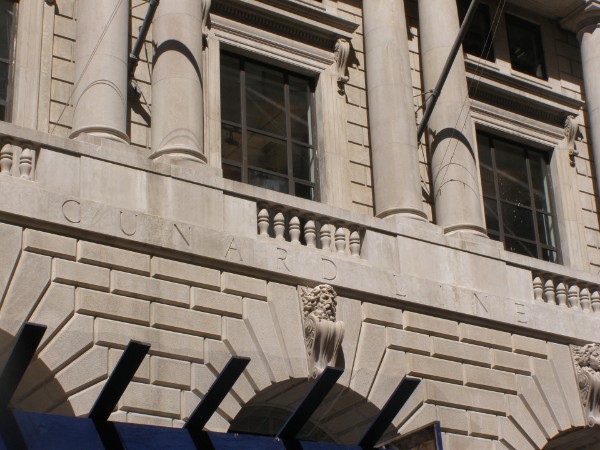
Pier 57 is still very recognizable as a liner pier. It is in fact this pier, intended for Titanic to lands her passengers after her maiden voyage in april 1912.

Some Titanic passengers did arrive in New York, but they landed at pier 54, sailing the second leg of the journey aboard Cunard Line's Carpathia. After her heroic race across the icefield, captain Rostron's ship took 703 survivors ofthe tragedy to New York. Pier 54 is now almost gone.
Below is pier 40, nowadays a sports complex but it used to be the last pier of the Holland America Line from 1962 onwards. Before that, passengers of the HAL were landed in Hoboken, on the other side of the river in New Jersey. It was the biggest and most modern pier in the city, and its shape made it possible to dock three large ships at the same time. But the liner days were ending and the pier was used for freight and also several other companies used pier 40, besides HAL. In 1971, Holland America ended the transatlantic journeys.
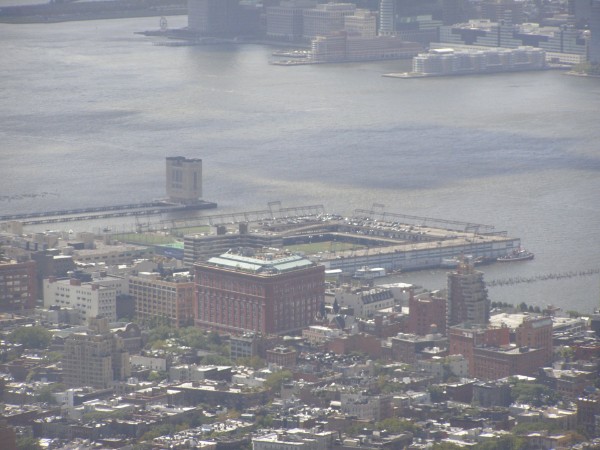
To my own surprise, I saw that just south of the passenger terminal, pier 94 still has the name of Cunard Line showing. It is the only company from the times when the ocean liners docked here that still has the name on one of the piers.
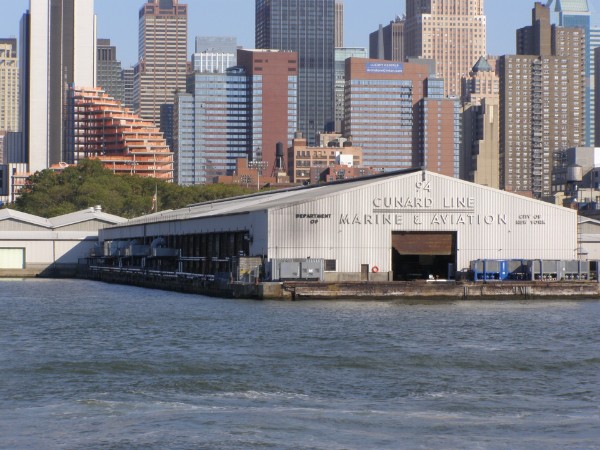
The old liners are gone from New York for some decades now and their memory is vanishing quickly at the Hudson waterfront. The former piers of the grandest steamships are now demolished, neglected or taken by ships like Carnival Glory. I had to think about Normandie when I saw this modern giant, moored at the spot of the great 1935-built ship's demise.
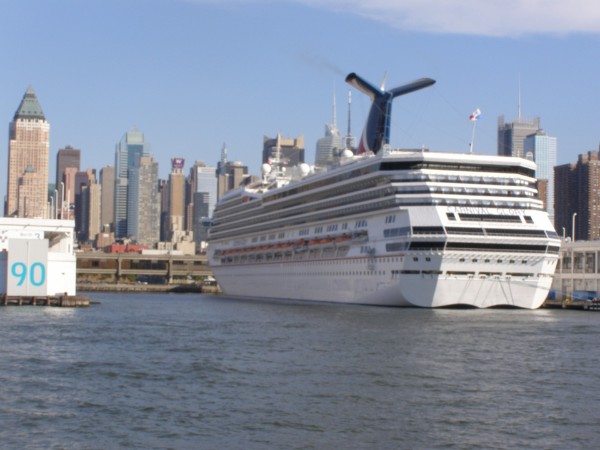
But what I really like about New York was the differences between all people and especially their commitment to a world where every religion, culture or race seems to be more than welcome. The piers and ships may be gone, but the legacy they have brought to the city of New York is still vividly alive. The true melting pot between cultures, arrived by transatlantic passengership makes the city what it is today.

